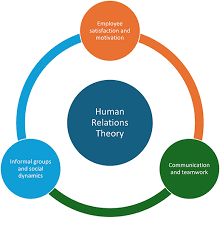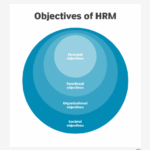The Human Relations Approach is a foundational theory in behavioral science and organizational psychology that emphasizes the social and interpersonal dimensions of work. Coined by Elton Mayo and his research team, the term “human relations” goes beyond mere workplace relationships, representing a broad spectrum of social-psychological insights into how group dynamics, communication, and emotional well-being affect employee behavior and performance.
This approach gained prominence through the Hawthorne Studies (1927–1932) conducted at the Western Electric Hawthorne Works in Chicago. Researchers—including Mayo, Roethlisberger, Dickson, and Whitehead—explored how social context influenced workplace productivity. Key experiments included:
-
Lighting Experiment: Despite differing light intensities between test and control groups, both showed improved performance. The observed boost was attributed to employees feeling acknowledged and consulted—underscoring the importance of psychological factors over physical conditions.
-
Break Experiment: Productivity rose not necessarily because of increased breaks, but due to a more respectful, cooperative attitude from management.
-
Observation Room Experiment: Workers assembling telephone switch systems did not maximize output, even under incentive-based pay. Instead, they adhered to informal group norms that dictated acceptable performance levels—highlighting the role of group dynamics in shaping behavior.
The central takeaway of the Human Relations Approach is that attention, recognition, and supportive social environments significantly influence employee motivation and job satisfaction. The findings laid the groundwork for the Human Relations School of Management, which shifted organizational focus from purely mechanical and economic factors to the social motives of employees.
Though the Hawthorne Studies have faced methodological criticism, their impact on modern management theory and organizational behavior remains significant. The Human Relations Approach marks a shift toward recognizing that productive work is deeply influenced by interpersonal care, communication, and employee inclusion.
« Back to Glossary Index





![15 Employee Offboarding Templates That Save Hours of HR Time [Free Downloads] 15 Employee Offboarding Templates That Save Hours of HR Time [Free Downloads]](https://i1.wp.com/www.hrcloud.com/hubfs/Header.png?w=150&resize=150,100&ssl=1)
